BA5107 - Question bank PDF

| Title | BA5107 - Question bank |
|---|---|
| Author | Anonymous User |
| Course | Total quality management |
| Institution | Anna University |
| Pages | 6 |
| File Size | 123.9 KB |
| File Type | |
| Total Downloads | 84 |
| Total Views | 138 |
Summary
question bank for MBA TQM - Important question...
Description
Nehru Institute of Information Technology and Management T.M.Palayam, Coimbatore – 641 105 Department of Management Studies
QUESTION BANK SUBJECT NAME: Total Quality Management
YEAR/SEM: I/I
SUBJECT CODE: BA5107
PREPARED BY: Mr. BALA SUBRAMANIAN.A
UNIT I PART-A 1. Define Total Quality Management. 2. What are the different types of Customer? 3. What do you mean by customer perceived quality? 4. What do you mean by Customer satisfaction & customer dissatisfaction? 5. What is return on quality? What are the characteristics of quality vision statement? 6.What are Elements of TQM and 8 Pillars of TQM? 7.What are Quality Statements? List Responsibilities of QC Co-Ordinator 8.What is Customer care & Customer retention? 9.Define Performance, Durability & Assurance. 10. What is Reliability & Conformance? 11. List the Dimensions of Service Quality. 12. What is Cost of Quality & its techniques? 13. What are Prevention costs and Appraisal costs 14. What are internal failure costs and External failure costs? 15. What are Applications of Quality Cost? 16. Draw a Customer Satisfaction Model?
PART –B 1. (i) Write down the dimensions of service quality. Explain with an example. (ii)Why service quality is more difficult than product quality? 2. i)Write down the dimensions of product quality? Explain with an example.
ii) Explain the 8 pillars of TQM 3. Explain the cost of quality in detail. What are the techniques to analyse quality costs? Give an example of a service based industry. 4. i) How will u improve customer focus in Indian industries? ii) In the context of TQM business strategy is synonymous to customer value strategy? 5. (i) Customer retention is very essential. Comment (ii)Explain the definitions of quality: Product based, user based, Value based & manufacturing based – Give example of a fast food restaurant to measure the quality effectiveness
Unit II PART -A 1. List the Japanese 5S 2. What do you know about 8D methodology? 3. State Deming Philosophy. How does point 6 (Institute training )differ from point 13 ( encourage Education and self improvement ) 4. What are the three components of Quality Trilogy of Juran? 5. What is quality planning & quality control? 6. What is Feigenbaum’s cycle time reduction methodology? 7. What is contribution of Ishikawa? 8. What is QFD? What are the Objectives of QFD? 9. Explain Taguchi Loss Function 10. What is S/N Ratio(Signal to Noise Ratio) 11. What is Robust design? 12. What is System Design, Parameter Design and Tolerance Design?. 13. What is Quality according to Taguchi? What is Quality loss function? 14. List the benefits of cause of effect diagram? 15. What are the four absolutes of Quality? 16. Write about the Crosby "Vaccine"&” Hidden plant”? 17. What is Quality Circle (QC)? 18. Draw and explain PDCA/ PDSA Cycle? What is life cycle cost? 19. What are the benefits of Quality circle? 20. Explain Crosby”s contention that quality is free.
PART -B 1. i) Explain Deming’s 14 points for improving quality, productivity and competitiveness. ii) What are the seven deadly diseases in corporates as identified by Deming? 2. i) Explain Juran’s Trilogy for continuous process improvement. ii) Compare and contrast Deming’s, Juran and Crosby’s contributions to TQM 3. Explain the 14 principles of Crosby? What is Crosby”s management grid and its relevance in the present context? Is Crosby”s teaching relevant? 4. Explain TQM and Juran’s ten steps to quality improvement. 5. a)What are the characteristics of Quality circles and the rationale for using Quality circles ? b) Explain the structure of quality circle .List the benefits and limitations. c) Discuss the quality circle in an automobile industry. 6. Explain Taguchi Loss Function. What according to Japanese Quality Guru Taguchi, are the wider implications of quality assurance? 7. Describe in detail 5S housekeeping technique. How is it implemented in a manufacturing company? 8. Describe 8D methodology 9. Discuss the contributions of A.F. Feigenbaum’s total quality control/Describe the contribution of Masaaki Imai. 10. i) Explain in detail the contribution of Ishikawa, Feigenbaum and Taguchi with example ii) Draw a fish bone diagram with an example.
UNIT III PART A 1. What is Process Capability (Natural Tolerance)? 2. Define SPC. 3. What is type II error? What is replication? 4. What is statistical thinking? 5. What is a Control Chart? State the objectives of Control chart? 6. What are the Types of Control Chart? What are the Objectives of Control Chart? 7. Describe Six Sigma. Six sigma are merely repackaged versions of old quality improvement programs – Comment List steps in Six Sigma Process 8. What is Purpose of Process Capability? How the upper and lower capability indices are is fixed?
9. What is TPM? What are Objectives of TPM? 10. What are Six Big Losses? 11. What is Overall Equipment Efficiency? 12. What are the Types of Maintenance? 13. What is Tero-technology? 14. What is Reliability? Explain the Reliability in Series and Reliability in Parallel
PART B 1. i) Write short about SPC. Outline the steps for setting up a control chart to monitor a process ii) Use a neat diagram for selecting the appropriate control chart. 2. Describe the control charts for variable and attributes. Describe the control charts for defects or nonconformities. Explain control chart patterns. Explain the various methods that are used for graphical representation of a frequency distribution. 3. Explain steps in DMAIC Six Sigma Process and the concept of six – sigma. 4. Explain TPM in TQM environment? Explain the seven step plan to establish the TPM in an organization in detail. 5. i) Explain in detail Business process improvement. Explain the steps and principles of BPR. ii) What are the controversies against BPR in the Indian Scenario? iii) What are the applications of BPR? 6. What are benefits of BPR and Limitations of BPR?
UNIT IV PART - A 1. What are the types of Benchmarking? List the uses of benchmarking . 2. What is POKA YOKE? Differentiate Benchmarking and poka yoke . 3. Write about QFD and state the Objectives of QFD? 4. What is HOQ (House of Quality)? Draw the Structure of HOQ. 5. Phases in QFD Process? What are the Benefits of QFD? 6. What is FMEA? What are the Types of FEMA 7. List the Benefits of FMEA. 8. What is Risk Priority Number (RPN)? How is the express failure mode critical number obtained? 9. List New QC Tools. 10. What is a Check Sheet/Tally Sheet? 11. What is the voice of a customer?
12. Draw a Cause & Effect diagram with an example 13. What is a Pareto Diagram and Affinity diagram? 14. What is a Stratification Analysis? 15. What is a Scatter Diagram? 16. What is a Relationship Diagram and Tree Diagram?
PART B 1. Explain QFD with a suitable example. What are its advantages and Limitations? 2. Discuss the QFD process with new chart and flow diagram. 3. Explain HOQ with suitable example. 4. Explain FMEA Form in detail with suitable example. 5. Describe POKA YOKE with suitable examples. 6. Describe the Stages in FMEA. Highlight the scales used in FMEA. 7. What are the types of Benchmarking? Explain the advantages and limitations. 8. Describe the old management Tools. 9. Describe the new management Tools. 10. Describe Stages in QFD. List key requirements and key technical requirements for an automobile windshield/ Call Center/your choice . Create a matrix using QFD.
UNIT V PART A 1. Give the Basic Concepts of TQM.List the Barriers of TQM Implementation. 2. What are Benefits of TQM? Give the Principles of TQM. 3. Give the Obstacles associated with TQM Implementation? 4. What is QMS and ISO? 5. What is Quality System? What is Quality System Audit? 6. What are the Types of Audits based on coverage? Write the Stages of An Audit? 7. Draw the TQM Axioms / TQM Triangle: 8. What is a Quality Council? 9. Give the ISO 9000 Series of Standards? List the need for implementing ISO 9000. 10. What are the four elements for the planning of ISO 14001? 11. What is Empowerment in quality aspects? What are Conditions to Create Empowered Environment? 12. What is quality culture? 13. What is Recognition and reward?
14. What is Motivation? State two motivation theories. 15. What are the three conditions necessary to create the empowered environment? 16. Define Employee Involvement? What are the benefits of employee involvement? 17. What are the general duties of a quality council? 18. Describe the Characteristics Of TQM? 19. Write a note on self actualization. 20. List the stages in TQM.
PART B 1. Explain the steps to be followed in implementing quality system ISO 9001:2000. What are the steps to obtain certification? What are the advantages and disadvantages of obtaining certification? 2. What are the requirements of ISO 14000? Explain them briefly. Explain ISO 14000 with an Industrial application. 3. Explain in detail about the quality auditing with its different types. 4. Discuss in briefly about the documentation of quality system. Explain the benefits of EMS. 5. Discuss the concepts of TQM. Discuss TQM Principles. 6. What are the barriers in implementing TQM? what are the advantages in implementing TQM 7. i)How to achieve a motivated work force ? ii)How recognition and reward improve employee involvement ? 8. Discuss the obstacles which are found in implementing TQM in India. State measures to overcome them. 9. i) List the principles of leadership. ii) Which leadership style is most appropriate in a total quality setting? 10. i) Top management commitment drives all success factors of TQM . Quote examples of Indian industry. ii) What is Maslow’s Hierarchy of needs and how can it used in a total quality setting....
Similar Free PDFs

BA5107 - Question bank
- 6 Pages

Dmdw-question bank - question bank
- 17 Pages

Question bank
- 8 Pages
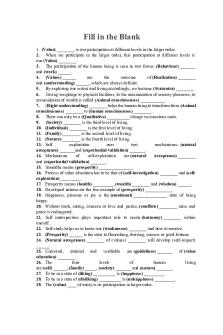
Question Bank 3question bank
- 6 Pages

Question BANK
- 19 Pages
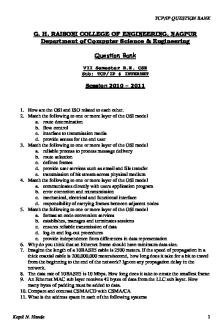
Tcp-ip-question-bank
- 25 Pages

Chapter 4 - Question Bank
- 28 Pages

DIP Question Bank Sheetal
- 14 Pages
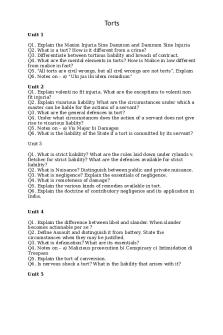
Torts Question Bank
- 2 Pages
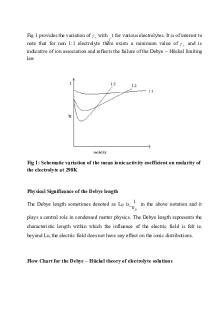
QB5 - Question Bank 5
- 104 Pages

Assessment Question Bank 1
- 22 Pages
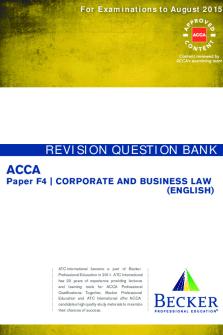
Revision Question Bank 60
- 154 Pages
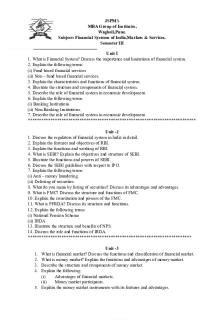
Fsims Question Bank
- 4 Pages

11. Autocad question bank
- 14 Pages
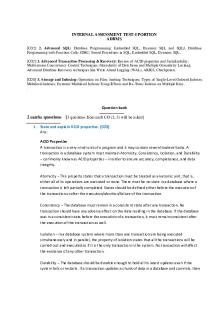
Question bank Adbms - solution
- 45 Pages

Viva Question Bank - CSS
- 17 Pages
Popular Institutions
- Tinajero National High School - Annex
- Politeknik Caltex Riau
- Yokohama City University
- SGT University
- University of Al-Qadisiyah
- Divine Word College of Vigan
- Techniek College Rotterdam
- Universidade de Santiago
- Universiti Teknologi MARA Cawangan Johor Kampus Pasir Gudang
- Poltekkes Kemenkes Yogyakarta
- Baguio City National High School
- Colegio san marcos
- preparatoria uno
- Centro de Bachillerato Tecnológico Industrial y de Servicios No. 107
- Dalian Maritime University
- Quang Trung Secondary School
- Colegio Tecnológico en Informática
- Corporación Regional de Educación Superior
- Grupo CEDVA
- Dar Al Uloom University
- Centro de Estudios Preuniversitarios de la Universidad Nacional de Ingeniería
- 上智大学
- Aakash International School, Nuna Majara
- San Felipe Neri Catholic School
- Kang Chiao International School - New Taipei City
- Misamis Occidental National High School
- Institución Educativa Escuela Normal Juan Ladrilleros
- Kolehiyo ng Pantukan
- Batanes State College
- Instituto Continental
- Sekolah Menengah Kejuruan Kesehatan Kaltara (Tarakan)
- Colegio de La Inmaculada Concepcion - Cebu